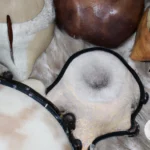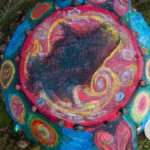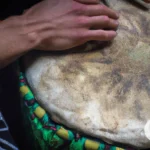Shamanic drumming and chanting have been used for centuries as a powerful tool for healing and spiritual growth. The rhythmic beat of the drum and the harmonic tones of the chant can transport practitioners into altered states of consciousness, allowing them to connect with the spirit world and access deep healing energies. But what exactly is shamanism, and where does the tradition of drumming and chanting come from? In this article, we will explore the origins and benefits of shamanic drumming and chanting, as well as how to use these practices for healing and spiritual development.
What is Shamanism?
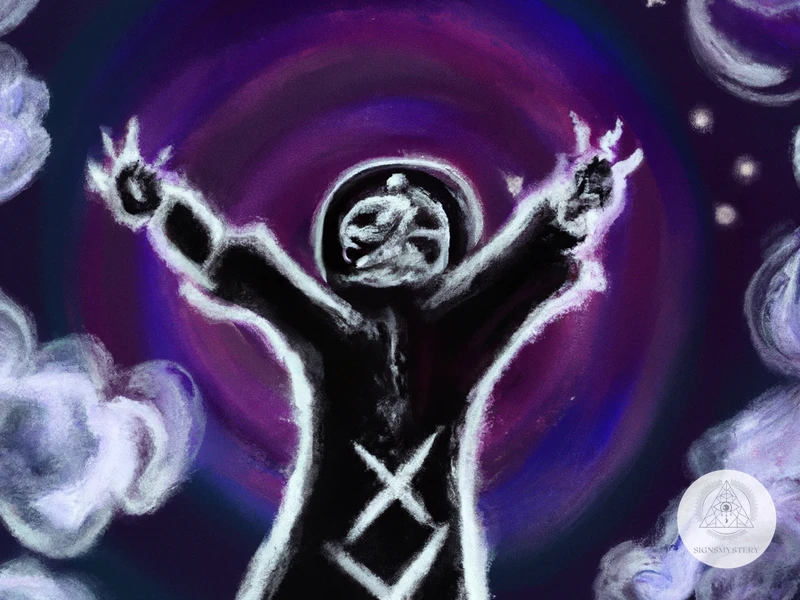
Shamanism is a spiritual practice that involves connecting with the spirit world, healing, and restoring balance in one’s life. Shamanism is deeply rooted in ancient cultures, where it is believed that everything in nature is interconnected and has a spirit. A shaman acts as a mediator and interpreter between the physical and spiritual worlds, using techniques such as drumming, chanting, and trance to enter into a state of altered consciousness. The origins of shamanism can be traced back to prehistoric times, where evidence of shamanic practices has been found in various cultures around the world. Today, shamanism continues to be practiced by indigenous communities around the world, as well as by individuals seeking spiritual guidance. To delve deeper into the role of traditional chants or shamanic ceremonies in shamanism, check out this article, or for a better understanding of the cultural significance of shamanic music, read this article.
Definition of Shamanism
Shamanism is an ancient spiritual practice that is found in indigenous cultures all around the world. Shamanism is deeply rooted in the belief that everything in the natural world is alive and interconnected. It is based on the idea that there are spiritual beings, or spirits, that inhabit both the natural world and the spiritual world. Shamans are individuals who are believed to have the ability to communicate with these spirits and to receive guidance and wisdom from them.
In shamanic belief systems, every living being is seen as having a spirit or soul, which exists beyond the physical body. These spirits can be communicated with and can offer guidance and healing to those who seek it. Shamans use a variety of techniques to communicate with spirits, including drumming, chanting, dance, and plant medicine.
One of the key elements of shamanic practice is the idea of the journey. This involves entering into an altered state of consciousness, often with the aid of drumming or chanting, and traveling through the spiritual realms to communicate with spirits and receive guidance. This journey can be undertaken for personal healing and growth, or to help others who are seeking healing.
Shamanism is not a religion, but rather a spiritual practice that is rooted in the traditions and beliefs of indigenous cultures. It is a way of connecting with the natural world and with the spirits that inhabit it. Shamanic practices have been used for thousands of years for healing, spiritual growth, and guidance.
In modern times, there has been a resurgence of interest in shamanic practices, and many people are turning to shamanic songs, chants, and instruments as a way to connect with the spiritual realm and to find healing and guidance. While shamanism may not be a mainstream spiritual practice, it offers a powerful and transformative path for those who are drawn to it.
Origins of Shamanism
The origins of shamanism can be traced back to ancient cultures all around the world. Shamans are spiritual leaders who are believed to have the ability to communicate with the spirit world and act as intermediaries between humans and the divine. They have been known by many names in different cultures, such as medicine men or women, witch doctors, or spiritual healers.
Here are some examples of the origins of shamanism in various cultures:
- In Siberia, shamanism has been practiced for thousands of years by the indigenous people known as the Tungus, who believe that shamans have the power to heal the sick, communicate with ancestors, and control the elements.
- In the Amazon rainforest, indigenous tribes use ayahuasca, a plant-based brew, to induce a trance state that allows them to communicate with the spiritual world and receive guidance from their ancestors.
- In Africa, traditional healers called sangomas use divination tools such as bones or shells to diagnose illness and connect with the spiritual realm for guidance.
- In North America, Native American shamans use drumming and chanting to enter a trance state and connect with the spirit world.
Despite the diversity of cultures and practices, the fundamental principles of shamanism remain the same: the belief in the interconnectedness of all things, the power of the natural world, and the ability of the shaman to communicate with the spiritual realm for the benefit of the community.
The Benefits of Shamanic Drumming and Chanting
The benefits of shamanic drumming and chanting are numerous and varied. Shamanic drumming and chanting work by inducing a state of trance in the brain. This trance state allows the individual to experience a higher level of consciousness and access deeper levels of the psyche. From this heightened state of awareness, shamanic drumming and chanting have been found to reduce stress, improve mood, and increase creativity. Additionally, shamanic drumming and chanting have been used to treat a variety of ailments, including anxiety, depression, and PTSD. The therapeutic effects of shamanic drumming and chanting are due to their ability to induce a state of relaxation and release pent-up emotions. Shamanic drumming and chanting are powerful tools for self-discovery and healing.
How Shamanic Drumming and Chanting Work
How Shamanic Drumming and Chanting Work:
Shamanic drumming and chanting work together to produce a therapeutic effect on the mind, body, and spirit. The repetitive rhythm of the drumming and chanting can alter brainwave patterns, inducing a state of deep relaxation and trance-like state. During this state, the shamanic practitioner can access the spiritual realm while still retaining awareness of their physical surroundings.
Here are some ways that shamanic drumming and chanting work:
| 1. Altering Brainwaves | Shamanic drumming and chanting can shift brainwave activity from the beta state, which is associated with wakefulness and alertness, to the alpha and theta states, which are associated with deep relaxation and creativity. These altered brainwaves can induce a trance-like state that is conducive to spiritual exploration and healing. |
| 2. Restoring Balance | The steady rhythm and vibration of shamanic drumming can help restore balance to the body and mind, releasing tension and promoting a sense of well-being. Chanting can also have a calming effect on the nervous system, helping to reduce stress and anxiety. |
| 3. Connecting with the Spirit World | The rhythmic beating of the drum is thought to mimic the heartbeat of Mother Earth, creating a connection with the natural world and the spiritual realm. This connection can allow the shamanic practitioner to receive guidance and wisdom from spirit guides, ancestors, and other spiritual beings. |
| 4. Releasing Blockages | The vibration of shamanic drumming and chanting can help release energetic blockages, which are thought to be the root cause of physical, emotional, and spiritual imbalances. The repetitive rhythm and chanting can create a resonance within the body, encouraging the release of stagnant energy and emotions. |
Shamanic drumming and chanting have been used for centuries as a means of healing, spiritual exploration, and connection with the divine. Understanding how they work can help you gain the most benefit from these ancient practices.
Therapeutic Effects of Shamanic Drumming and Chanting
Shamanic drumming and chanting have numerous therapeutic effects that can enhance overall health and wellbeing. One of the primary benefits of shamanic drumming and chanting is that it can induce a state of deep relaxation and reduce stress. When the body is in a relaxed state, the mind can also relax, which can lead to a reduction in anxiety and an improvement in sleep.
Additionally, shamanic drumming and chanting have been shown to help reduce pain and inflammation. This is likely due in part to the fact that deep relaxation can help to lower blood pressure and decrease heart rate, which can help to reduce pain. The vibrations of drumming and chanting can break up blockages in the body, allowing for a better flow of energy and a reduction in inflammation.
Shamanic drumming and chanting can also help individuals to connect with their inner selves and gain greater insight into their own lives. This can be particularly useful for individuals who feel stuck or lost. By helping to shift one’s perspective and open up new pathways for consciousness, shamanic drumming and chanting can facilitate personal growth and self-awareness.
Finally, shamanic drumming and chanting can be an effective tool for healing emotional wounds. By accessing the deep emotions stored within us and releasing them through sound and rhythm, we can achieve a sense of peace and closure. This can be a transformative experience that allows individuals to move forward in a more positive and healthy way.
Shamanic drumming and chanting have a range of therapeutic effects that make them a valuable tool for improving overall health and wellbeing. Whether used alone or in conjunction with other therapies, the benefits of shamanic drumming and chanting are undeniable.
Types of Shamanic Drumming and Chanting
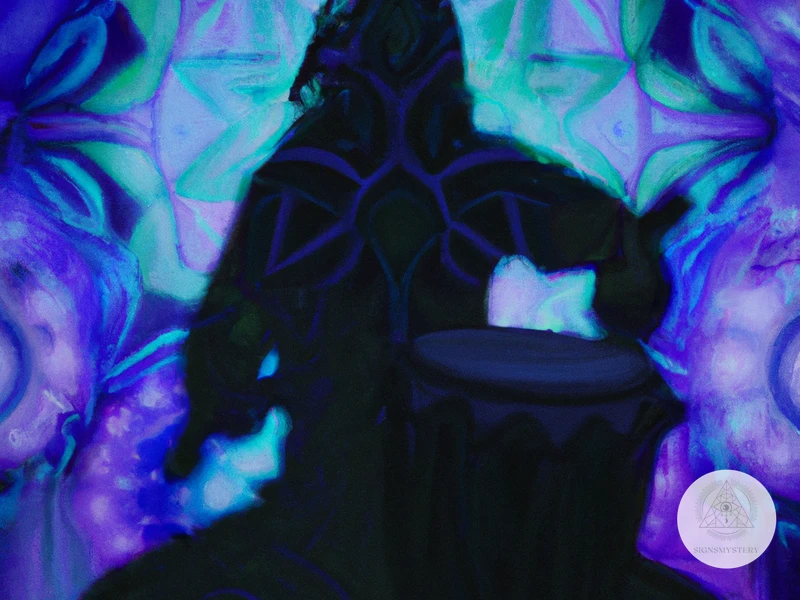
Shamanic drumming and chanting have been practiced for thousands of years and have evolved into various types. Traditional drumming and chanting involve the use of animal hide drums and repetition of ancient mantras, passed down through generations. Contemporary shamanic drumming and chanting may incorporate modern instruments and sound technology, creating a fusion of tradition and innovation. One example is the use of electronic drums and effects to enhance the healing vibrations of the chanting and drumming. Another type is cross-cultural drumming and chanting, which blends various sounds and rhythms from around the world. This can include Native American, Mongolian, African, and Middle Eastern influences. Regardless of the type, the powerful rhythms and vibrations created through shamanic drumming and chanting have the ability to transport the listener to altered states of consciousness, aiding in healing and personal growth.
Traditional Drumming and Chanting
Traditional drumming and chanting have been used for centuries by indigenous peoples around the world for healing purposes. Each culture has their own unique style and technique, but the underlying principles remain the same.
One example of traditional shamanic drumming and chanting comes from the Amazon rainforest tribes. They utilize a simple but powerful drum made from a hollowed out log and a taut piece of animal skin. The drum is beaten with a stick while the shaman sings or chants in a specific rhythmic pattern. This creates a trance-like state that allows the shaman to communicate with the spirit world and facilitate healing.
Another example is the use of traditional drums by Native American tribes. These drums are often large and decorated, and are beaten in a specific pattern accompanied by chants or songs. The music is believed to connect the shaman with the earth and their ancestors, leading to a sense of grounding and spiritual guidance.
Traditional shamanic chants are also an important aspect of the healing process. In many cultures, chanting is used to invoke specific spirits or deities for healing purposes. For example, in Tibetan culture, shamanic chants are used to invoke the Medicine Buddha, who is believed to have the power to heal physical and mental illnesses.
Traditional shamanic drumming and chanting have been used for centuries to connect with the spirit world and facilitate healing. These practices exemplify the deep spiritual connection between indigenous cultures and the natural world.
Contemporary Drumming and Chanting
Contemporary Shamanic Drumming and Chanting has gained popularity in recent years, particularly in western culture. Practices often incorporate traditional shamanic techniques and musical elements, while also drawing inspiration from modern-day music and spirituality. Some contemporary shamanic practitioners even incorporate electronic music and technology into their practices.
Contemporary shamanic drumming and chanting ceremonies can also include dance, poetry, and storytelling as a way to enhance the healing experience. Often these practices are conducted in group settings, with participants coming together to co-create the ceremony.
One unique aspect of contemporary shamanic drumming and chanting is the integration of music therapy techniques. Music therapists and shamanic practitioners work together to create customized rituals that address specific emotional, physical, and spiritual needs of clients. The combination of music therapy and shamanic practice creates a powerful healing experience that can have long-lasting effects.
In addition to personal healing, contemporary shamanic drumming and chanting can also be used for community healing and social justice. Events such as drum circles and chanting circles can bring people together to create a sense of unity and connections. These practices can also be used as a form of protest or expression for social justice issues.
It is important to note that while contemporary shamanic drumming and chanting can be a powerful healing tool, it should not be considered a replacement for professional medical and psychological treatment. It is always important to consult with a healthcare professional before incorporating any new holistic practices into a healing regimen.
Contemporary shamanic drumming and chanting is an evolving practice that is constantly adapting to the changing needs of people and society. It is a testament to the resiliency of shamanic traditions and the human spirit to create meaningful and transformative experiences in the modern era.
How to Use Shamanic Drumming and Chanting for Healing
Using shamanic drumming and chanting for healing involves a specific series of steps that should be followed for optimal results. First, it is essential to create a safe and sacred space. This can include lighting candles, burning incense, and cleansing the area with sage. Next, it’s important to choose the right drum and chant that resonates with you. Setting a clear intention will help focus the energy towards your desired outcome. Finally, it’s crucial to understand and practice shamanic drumming and chanting techniques, such as synchronizing your drumming with your breath and using visualization to enhance the experience. With the proper preparation and execution, shamanic drumming and chanting can be a powerful tool for physical, emotional, and spiritual healing.
Creating a Safe and Sacred Space
When using shamanic drumming and chanting for healing purposes, it’s essential to create a safe and sacred space that allows for an optimal environment to do the work. This safe space is meant to create a container for your healing journey where you can feel secure and free to allow your emotions and thoughts to flow.
To begin, find a quiet and comfortable location where you won’t be interrupted, and where you can feel at ease. You want to ensure that you’re not distracted by outside noises or people, as it can disrupt the flow of your practice. The lighting of the space should also be adjusted to create a peaceful and warm atmosphere. Soft, dimmed lights or candles can help with this, and it’s also useful to have a comfortable place to sit or lie down during your practice.
The use of sacred elements can also be incorporated into the creation of a safe space. Some people choose to use crystals, stones, or plants that represent different energies and purposes. Feathers, herbs, and other sacred objects can be used to enhance the spiritual aspects of the space, and for some, a personal altar can also be created.
It’s essential to clear the energy of the space before beginning any practice. Burning sage, palo santo, or other cleansing herbs can be used to release any negative energy within the space and create a spiritual cleanse. This process helps to create a blank canvas for your healing journey and ensures that positive and healing energy can flow freely.
It’s highly recommended to create an intention for your practice. This intention should be set before beginning your shamanic drumming and chanting session and should be focused on the specific healing work you want to accomplish. When you set an intention, it sends a powerful message to the universe, and it allows you to focus your energy on achieving your desired outcome.
Finally, be mindful of your emotions and feelings during your practice. It’s common to experience a range of emotions when embarking on a healing journey, but by creating a safe space, you can allow yourself to feel these emotions without fear or judgment. Remember to stay present and focused, and trust in the process of shamanic drumming and chanting as a powerful tool for healing.
Choosing Your Drum and Chant
When it comes to choosing your drum and chant, there are a few things to keep in mind. First, consider what type
Subscribe to Our Newsletter
Sign up to receive the latest news and updates.
It’s also important to consider the cultural background of the drum and chant you choose. Are you drawn to the traditional drums and chants of a particular indigenous culture, or do you prefer modern interpretations that blend various cultural elements?
In addition to personal preference and cultural considerations, it’s important to select a drum and chant that is appropriate for the specific type of healing you are seeking. For example, if you are looking to release emotional blockages, you may want to choose a drum and chant combination that is energizing and invigorating. On the other hand, if you are seeking a more meditative experience, you may prefer a drum and chant that is more subtle and calming.
Ultimately, the key is to select a drum and chant that resonates with you on a personal level, while also being appropriate for the type of healing you are seeking. Take time to explore different options and experiment with different combinations until you find the perfect match.
Setting Your Intention
Setting your intention is a crucial step in using shamanic drumming and chanting for healing. Your intention will guide your focus and set the tone for the experience. Here are some tips for setting your intention:
- Be clear: Take time to reflect on what you hope to accomplish with shamanic drumming and chanting. Write down your intention in a clear and concise manner.
- Be specific: Instead of a general intention like “to feel better,” try to be specific about what you hope to achieve. For example, “to release stress and tension in my body.”
- Use affirmative language: Phrase your intention in a positive way. Instead of “I don’t want to feel anxious,” try “I feel calm and grounded.”
- Visualize: As you set your intention, visualize yourself already achieving your desired outcome. This will help you connect with the intention on a deeper level.
- Repeat: Repeat your intention to yourself several times before starting the drumming and chanting.
When you set a clear and specific intention, it can help focus your mind and body on the healing process. It can also help you remain grounded and open to the experience. Remember that your intention can shift and change over time, so don’t be afraid to adjust it as needed.
Shamanic Drumming and Chanting Techniques
Shamanic drumming and chanting techniques are powerful tools for accessing altered states of consciousness and facilitating healing. Here are some of the most effective techniques:
1. Rhythmic Drumming:
The steady and repetitive beat of a shamanic drum is the foundation of shamanic drumming and chanting techniques. It is believed that the rhythm of the drum can help synchronize the brainwaves of the listener, allowing them to enter a trance state.
2. Vocal Toning:
Vocal toning is a technique in which the practitioner produces a sustained sound, often in the form of a single vowel. This technique can help open up the throat chakra and facilitate the flow of energy through the body.
3. Chanting:
Chanting is another technique used in shamanic drumming and chanting. It involves the repetition of a simple phrase or word, often in a call-and-response format. Chanting can help to focus the mind and facilitate a deeper connection with spirit.
4. Visualization:
Visualization is a powerful tool that can be used in conjunction with shamanic drumming and chanting. By visualizing certain images or scenes, the mind can be guided into altered states of consciousness, allowing for deep spiritual insights and healing.
5. Intention Setting:
Before beginning a shamanic drumming and chanting session, it is important to set an intention. This can involve asking for guidance, clarity, healing, or any other specific outcome. Setting an intention can help to focus the mind and direct the energy of the session towards a specific goal.
By combining these techniques, practitioners can create powerful shamanic drumming and chanting experiences that can facilitate deep healing and spiritual growth. Whether used alone or in a group setting, these techniques can help us connect with our inner selves and the divine.
When Not to Use Shamanic Drumming and Chanting
It’s important to keep in mind that there are certain situations where shamanic drumming and chanting may not be appropriate. For instance, individuals with certain medical conditions or mental health disorders may be at risk of experiencing more harm than benefit from this practice. Some contraindications include acute psychosis, extreme paranoia, schizophrenia, and seizure disorders. Additionally, those who are under the influence of drugs or alcohol should avoid taking part in shamanic drumming and chanting. It’s important to always speak with a healthcare professional before beginning any new therapy or activity. Safety should always be a top priority.
Contraindications of Shamanic Drumming and Chanting
While shamanic drumming and chanting can bring about many positive effects, there are certain situations where it may not be appropriate to use them. Here are some contraindications to be aware of:
| Condition | Explanation |
|---|---|
| Psychotic Disorders | Individuals with psychotic disorders may become agitated or experience a worsening of their condition when exposed to shamanic drumming and chanting. |
| Epilepsy | Shamanic drumming and chanting can cause seizures in people with epilepsy or other seizure disorders. |
| Heart Conditions | The intense physical and emotional effects of shamanic drumming and chanting can put stress on the heart, so people with certain heart conditions should avoid this practice. |
| Substance Abuse | Individuals with substance abuse issues may be triggered by shamanic drumming and chanting, so it is not recommended for those in active addiction or early recovery. |
| Mental Health Medications | Some medications used to treat mental health conditions can interact negatively with shamanic drumming and chanting, so it is important to check with a healthcare provider before attempting this practice. |
It is important to note that shamanic drumming and chanting are powerful tools that should be respected and used with caution. It is always best to consult with a qualified practitioner or healthcare provider if you are unsure whether or not this practice is right for you. By being aware of potential contraindications, you can safely and effectively incorporate shamanic drumming and chanting into your healing journey.
Conclusion
After exploring the healing power of shamanic drumming and chanting, it’s clear that the ancient practice has numerous benefits for individuals seeking to improve their overall well-being. From reducing stress and anxiety to promoting emotional release and spiritual connection, shamanic drumming and chanting can be a powerful tool for holistic healing. However, it’s important to approach this practice with caution and respect for its origins and cultural significance. As with any form of alternative therapy, it’s crucial to consult with a trained practitioner and to do thorough research before diving in. With proper guidance and a genuine intention for healing, shamanic drumming and chanting can offer a transformative experience for those who are open to its teachings.
Summary of Benefits and Precautions
Summary of Benefits and Precautions:
Summary of Benefits:
- Relaxation: Shamanic drumming and chanting can promote deep relaxation and can reduce stress, anxiety, and depression.
- Pain Relief: Shamanic drumming and chanting can be useful in pain management and can help alleviate chronic pain.
- Emotional Healing: Shamanic drumming and chanting can help individuals process and release emotional trauma.
- Spiritual Connection: Shamanic drumming and chanting can enhance spiritual awareness and promote a deeper connection to the self and to nature.
- Enhanced Focus and Clarity: Shamanic drumming and chanting can help clear the mind and improve focus and concentration.
- Cultural Preservation: Shamanic drumming and chanting can help preserve traditional indigenous practices and promote cultural awareness and understanding.
Summary of Precautions:
- Psychological Vulnerability: Individuals with severe mental health issues or a history of trauma may not be suitable candidates for shamanic drumming and chanting, as it may trigger negative emotional responses.
- Physical Limitations: Individuals with physical limitations or injuries that affect their ability to move or play a drum may not be able to participate in shamanic drumming and chanting.
- Non-Consensual Practices: It is important to ensure that any shamanic drumming and chanting sessions are performed with the consent and input of all participants.
- Substance Abuse: Individuals who are currently using or have a history of substance abuse may not respond well to shamanic drumming and chanting, as it involves a heightened state of consciousness and may exacerbate addiction.
Shamanic drumming and chanting can have many therapeutic and spiritual benefits when practiced safely and responsibly. However, it is important to be aware of potential precautions and consult with a qualified practitioner when necessary.
Final Thoughts
Final Thoughts:
Shamanic drumming and chanting have been found to have significant therapeutic benefits for those seeking spiritual and emotional healing. By inducing a state of relaxation and altered consciousness, shamanic practices can help individuals gain new perspectives on their lives and find deeper meaning and purpose.
However, it is important to remember that shamanic drumming and chanting should not replace conventional medical treatment for physical or mental health conditions. Always consult with a healthcare professional before starting any new healing practices.
It is crucial to approach shamanic practices with respect and mindfulness. It is not a trend or a quick fix, but a sacred and ancient tradition that requires dedication and discipline.
Finally, remember that the healing power of shamanic drumming and chanting lies in the intention and the energy that you bring to your practice. By setting your intention and creating a safe and sacred space, you can harness the transformative power of this ancient practice and experience deep healing and spiritual growth.
| Important | Shamanic drumming and chanting should not replace conventional medical treatment for physical or mental health conditions |
| Approach with Respect | Shamanic practices are sacred and ancient traditions that require dedication and discipline |
| Power of Intention | The healing power of shamanic drumming and chanting lies in the intention and energy that you bring to your practice |
Incorporating shamanic drumming and chanting into your spiritual and healing practices can be a profound and transformative journey. With the right preparation, intention, and mindset, you can tap into the healing power of this ancient tradition and experience deep spiritual growth and transformation.
Frequently Asked Questions
How long has shamanism been practiced?
Shamanism has been practiced for thousands of years, with evidence of shamanic practices dating back to prehistoric times.
What are some common techniques used in shamanic drumming?
Some common techniques used in shamanic drumming include steady beats, rhythmic patterns, and call-and-response chanting.
How can shamanic drumming and chanting help with healing?
Shamanic drumming and chanting can help with healing by inducing meditative and trance-like states, reducing stress, and promoting emotional and physical well-being.
Is shamanic drumming and chanting safe for everyone?
While shamanic drumming and chanting can be safe for most people, those with a history of seizures, high blood pressure, or heart problems should consult with their healthcare provider before using this technique.
What types of drumming and chanting are used in contemporary shamanism?
Contemporary shamanism may use a variety of drumming and chanting techniques, including fusion with other musical styles and the use of electronic instruments.
How can someone create a safe and sacred space for shamanic drumming and chanting?
Creating a safe and sacred space for shamanic drumming and chanting can involve setting clear intentions, using cleansing rituals like smudging, and ensuring a comfortable and peaceful environment.
What is the best way to choose a drum and chant for shamanic healing?
The best way to choose a drum and chant for shamanic healing is to trust your intuition and select instruments and sounds that resonate with you and your intention.
What is the role of intention in shamanic drumming and chanting?
Intention plays a central role in shamanic drumming and chanting, as it shapes the purpose and focus of the practice and guides the rhythms and chants used.
How can someone learn shamanic drumming and chanting?
Someone can learn shamanic drumming and chanting through workshops, classes, or online resources that teach the principles and techniques of this practice.
Are there any potential risks or side effects of shamanic drumming and chanting?
While shamanic drumming and chanting are generally safe, they may cause dizziness, disorientation, or emotional releases in some individuals. It is important to approach this practice with intention and care, and to stop if any discomfort or negative effects occur.



